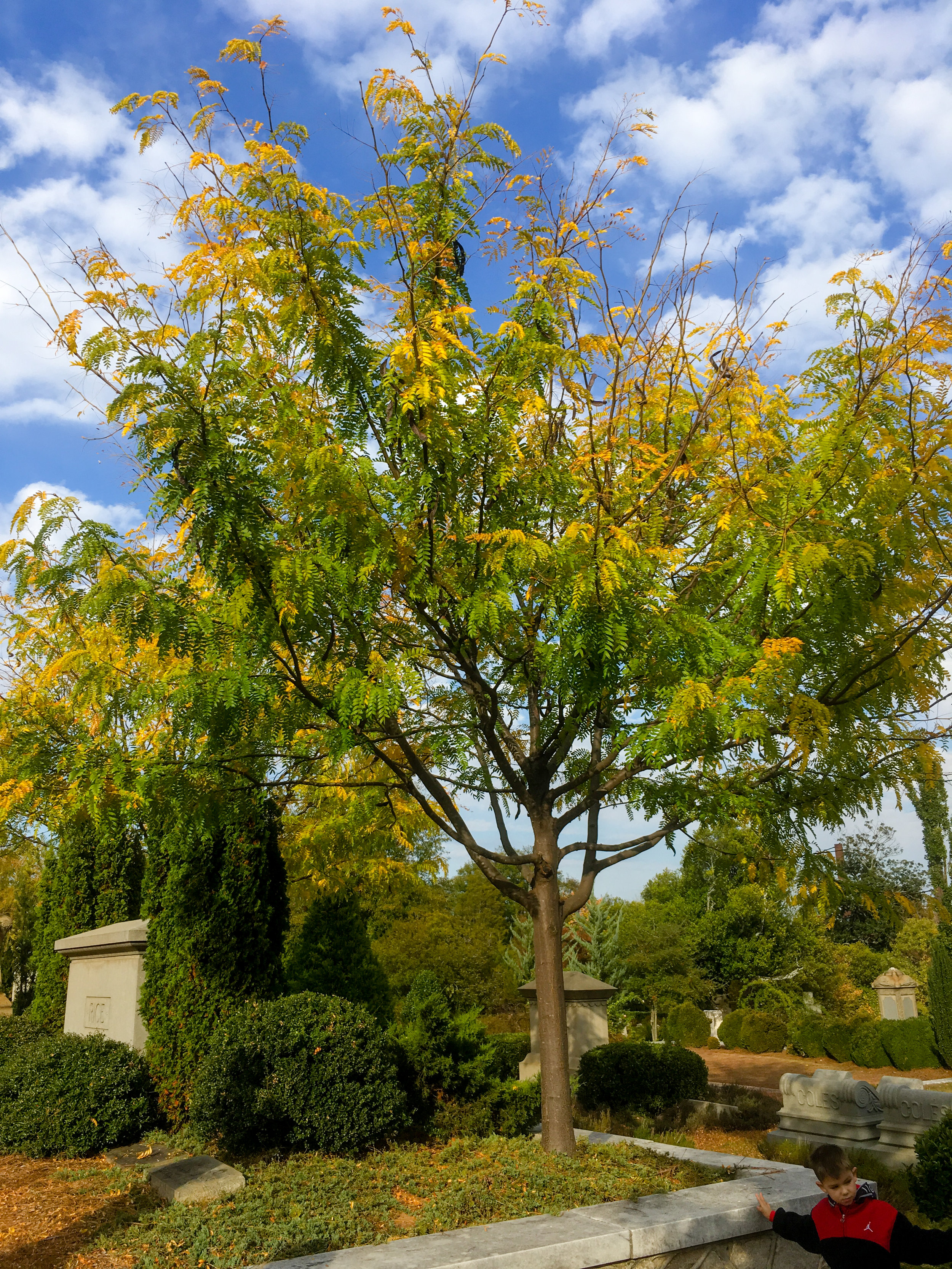Oakland Cemetery Autumn Tree Walk, November 12, 2016
Oakland Cemetery offers one tree walk each season. This year's fall walk didn't have the best display of colors since we've been in a drought with unseasonably warm weather and our peak color is coming in particularly late this year. This is the first Oakland Cemetery tree walk I've attended, so it didn't matter to me that the season wasn't quite right.
Oakland has over 1400 trees (they are currently in the process of performing a tree survey.)
The tour was led by several Oakland Cemetery folks.
Cemetery as a Gathering Place
In the late 19th century, cemeteries were often seen as gathering places. Families would come to Oakland Cemetery on Sunday afternoons to picnic and garden. The cemetery was a public park and was used as one.
Victorian Symbolism
Oakland Cemetery became a burial ground in 1850. As such, it was greatly influenced by Victorian times and ideals. The Victorians saw symbolism in columnar trees as pointing towards heaven and in weeping trees symbolizing weeping, grief, and sorrow. As a result, many of these types of trees have been planted in Oakland Cemetery.
In Victorian times, tropical plants like palms were also highly regarded.
Unusual Trees
Amongst the trees on the tour were two city champions: the European Cherry Laurel and the Southern Magnolia, as well as some other unusual varieties of common trees (and a vine), like sweet gum, wisteria, and bald cypress.
Tornado
Source: NOAA
Part of Oakland Cemetery is located just where the right orange (EF2) spot is
The EF2 designation means: "Considerable damage. Roofs torn off well-constructed houses; foundations of frame homes shifted; mobile homes completely destroyed; large trees snapped or uprooted; light-object missiles generated; cars lifted off ground."
On March 14, 2008, a tornado hit parts of downtown Atlanta. One of the worst hit areas was Oakland Cemetery. As well as many markers being damaged, the cemetery lost around 100 trees as a result of the tornado.
Since then, many of those trees have been replaced with younger trees of the same or similar species.
Fortunately, some of the largest and oldest trees survived.
I recommend attending one of the Oakland Cemetery tree tours. You can find out when these and their other great tours are happening by checking out their event calendar. You can also donate your time or money to help maintain the arboretum.
Links
Oakland Cemetery Web Facebook
Oakland Cemetery events
Oakland Cemetery arboretum
Oakland's history














